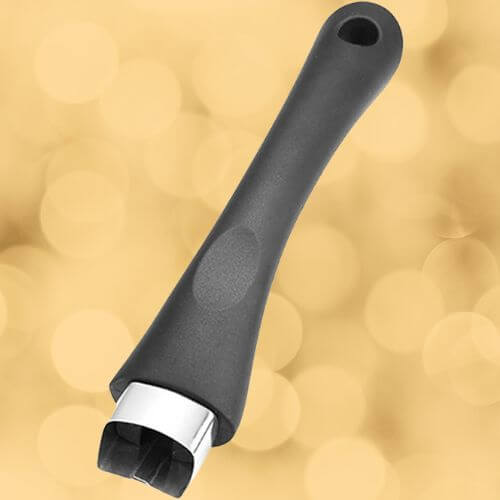When writing our review on the best woks for electric stoves, we discovered that the handles on cookware are a very important feature to think about.
In choosing any cookware, there are a lot of decisions to make. What type of material do you want? What size? What color? But one of the most important choices you'll make is what type of handle you want. After all, the handle is what you'll be gripping every time you use the pot or pan, so it's important to choose one that's comfortable and easy to use.
In this blog post, we'll break down the different types of cookware handles so you can make an informed decision when you're ready to purchase your new set.

The first thing to consider when choosing a handle is what material it's made from. The most common materials are metal and wood, but there are also plastic and silicone options available.
Metal handles are a popular choice for many people because they are strong and durable. There are several different types of metal that can be used to make handles, including iron, stainless steel, and carbon steel.
Each type of metal has its own advantages and disadvantages, so it is important to choose the right type of metal for your needs. Iron is the most sturdy and durable option, but it is also the heaviest, making it difficult to carry around. Stainless steel is lightweight and corrosion-resistant, making it a good choice for wet or humid environments. Carbon steel is the strongest option, but it is also the most susceptible to rusting. When choosing a metal handle, it is important to consider both the strength and the weight of the handle in order to find the right balance for your needs.
However, one must be careful in cooking with metal-handled cookware because it does conduct heat and care must be taken when lifting the pot or pan that's hot. Using oven mitts is always a good idea.
Wood is a popular material for handles on cookware, as it provides a comfortable grip and classic style. However, wood is also susceptible to warping, especially when exposed to heat. Over time, the fibers in the wood can expand and contract, causing the handle to warp. This can make it difficult to use the cookware and can also be a safety hazard.
If you have cookware with wooden handles, be sure to avoid using it in the oven. Instead, opt for cookware with silicone or metal handles that are better able to withstand high temperatures. Wood handles look classic and elegant, but they can warp if they get too wet or hot.
Plastic and silicone handles are often bright and colorful, and they're usually heat-resistant as well. Bakelite was one of the first plastics to be mass-produced, and it quickly became popular for its wide range of uses.

One of the most common applications for Bakelite was in the creation of handles and other objects that needed to be heat-resistant. Bakelite plastic is made by combining carbon with other materials, which gives it a number of advantages over other substances. For instance, Bakelite is very strong and durable, making it ideal for handles that will see a lot of use. It is also resistant to heat and electricity, making it a safe material to work with.
Bakelite handles are still used in a wide variety of applications today, and the material continues to be prized for its unique combination of properties.
Once you've chosen a material, you'll need to decide how the handle is attached to the pot or pan. The two most common methods are riveted and welded. Riveted handles have metal loops that are attached to the cookware with small metal pins, while welded handles are attached by welding them directly onto the cookware itself. Riveted handles tend to be more durable since they're less likely to come loose over time, but welded handles provide a smoother surface that's easier to clean.
Finally, you'll need to decide on a style for your handle. The most common styles are loop and D-shaped handles. Loop handles have a hole in the middle that your hand can fit through, while D-shaped handles have a more traditional shape that's similar to a doorknob. Loop handles are usually found on smaller pots and pans since they're easier to grip with one hand, while D-shaped handles are often found on larger pots and pans since they provide more surface area for your hand to grip.
There's a lot to consider when choosing new cookware, but take your time and choose wisely—after all, you'll be using it for years to come! And when it comes time to pick out your new set's handles, remember to keep these factors in mind so you can find the perfect ones for your needs. Happy cooking!
Thanks for stopping by our bee hive!

Bertie
Each product we review is independently selected by our team, and all opinions in our articles are our own. As an Amazon Associate we earn from qualifying purchases. We stay in business by receiving a small share of sales from the links on our pages should you decide to buy something.










Member discussion